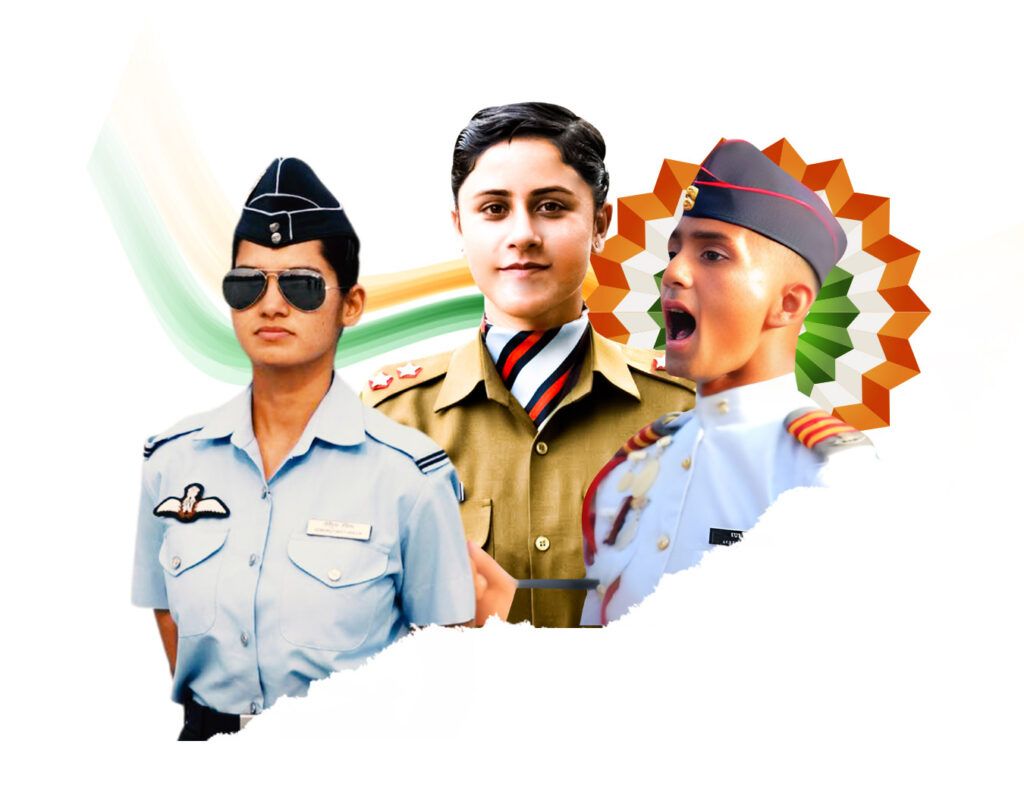Ranks in indian army a guide to indian army ranks

The Indian Army follows a hierarchical structure with various ranks, each associated with specific responsibilities and authority. Here are Ranks in Indian army a guide to Indian army ranks, detailed in ascending order:
Sepoy:

A Sepoy is the lowest enlisted rank in the Indian Army, equivalent to a Private in other military organizations. Sepoys form the backbone of the army, with their dedication and discipline playing a crucial role in maintaining the force’s operational readiness. These soldiers undergo rigorous training and are responsible for carrying out various duties, including guarding military installations, handling weapons and equipment, and participating in combat when necessary. Sepoys are often the first line of defence and embody the values of duty and service, which are fundamental to the Indian Army’s ethos.
Lance Naik:

A Lance Naik is a crucial rank in the Indian Army, typically held by a non-commissioned officer (NCO). They serve as a bridge between the lower enlisted soldiers and the higher-ranking NCOs and officers. Lance Naiks are responsible for leading small groups of soldiers, assisting in training activities, and ensuring discipline and order within their units. They are often regarded as experienced and skilled soldiers who provide guidance and mentorship to their peers. Lance Naiks play an essential role in the efficient functioning of the Indian Army by translating orders from higher-ranking officers into actionable tasks for the troops on the ground.
Naik:
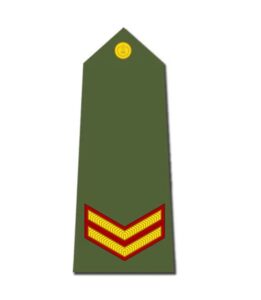
A Naik is a non-commissioned officer rank in the Indian Army, equivalent to a Corporal in some other military organizations. Naiks are responsible for leading small groups of soldiers, typically around 8 to 10, in various military tasks. They play a crucial role in maintaining discipline, training, and the overall operational effectiveness of their units. :Naiks are expected to set an example for their subordinates and assist in the execution of orders from higher-ranking officers. Their dedication and leadership are essential in ensuring the smooth functioning of the Indian Army’s operational units.
Havildar:
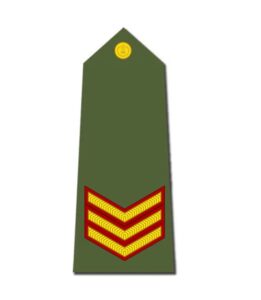
A Havildar in the Indian Army holds the rank of a non-commissioned officer, similar to a sergeant in other military forces. This position carries significant responsibility, as Havildars are entrusted with the leadership of small units and play a vital role in maintaining discipline and order among the troops. They are typically experienced soldiers with a wealth of knowledge and expertise, often serving as a bridge between officers and enlisted personnel. Havildars are essential in the efficient functioning of the Indian Army, contributing to the overall success of military operations through their leadership, training, and dedication to their duties.
Naib Subedar:

A Naib Subedar in the Indian Army holds the rank of a senior non-commissioned officer, similar to a Staff Sergeant in some other military organizations. They play a crucial role in leading and managing troops, as well as assisting officers in various administrative and operational duties. Naib Subedars typically have extensive experience and expertise in their respective fields, and their leadership is vital in maintaining discipline and readiness within their units. These dedicated individuals serve as a bridge between junior enlisted personnel and commissioned officers, ensuring effective communication and coordination in the military hierarchy.
Subedar:

A Subedar is a respected and experienced non-commissioned officer (NCO) rank in the Indian Army. Often referred to as the backbone of the Indian Army, a Subedar holds a position of significant responsibility and leadership. They typically lead a company or platoon and are responsible for the welfare, discipline, and training of the soldiers under their command. With years of dedicated service and a wealth of experience, Subedars play a crucial role in maintaining the operational readiness and morale of the troops, making them invaluable members of the Indian Army’s leadership hierarchy. Their dedication and commitment to their duties exemplify the ethos of the Indian military.
Subedar Major:

A Subedar Major is a senior non-commissioned officer (NCO) rank in the Indian Army. Often referred to as the “SM,” this rank holds significant responsibilities and is the highest NCO rank in the Indian Army. Subedar Majors serve as the link between the officers and the enlisted personnel, playing a crucial role in maintaining discipline, morale, and administrative efficiency within their units. They are highly respected for their experience and leadership, and they assist in the training, welfare, and overall well-being of the soldiers under their command. Subedar Majors are known for their unwavering dedication to duty and their role in upholding the traditions and values of the Indian Army.
Lieutenant:
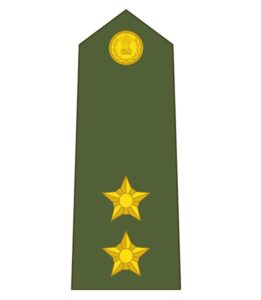
A Lieutenant in the Indian Army is a junior officer rank and an essential part of the military leadership structure. Typically, a Lieutenant is responsible for leading a platoon of soldiers and assisting in the planning and execution of various military operations. They are trained to make critical decisions, maintain discipline, and ensure the welfare of their troops. Lieutenants serve as the bridge between enlisted personnel and higher-ranking officers, often gaining valuable leadership experience as they progress through their military careers. As they gain more experience and responsibility, they may rise through the ranks to become captains and take on more significant roles within the Indian Army.
Captain:

In the Indian Army, a Captain is an officer rank, and it represents a significant milestone in an officer’s career progression. Captains are entrusted with various leadership and command responsibilities within their respective units, which can include platoons or companies. They play a crucial role in maintaining discipline, morale, and operational efficiency within their units. As junior officers, Captains are also responsible for the welfare and training of their soldiers. They are often the bridge between the enlisted personnel and higher-ranking officers, serving as both leaders and mentors. Captains in the Indian Army are essential to the overall effectiveness and readiness of the force, contributing to the nation’s defence and security.
Major:

A Major in the Indian Army holds a significant position within the officer ranks. With a wealth of experience and leadership skills, a Major is responsible for commanding a company of soldiers, typically consisting of around 100 to 120 personnel. This role involves a combination of tactical planning, training, and ensuring the welfare of the soldiers under their command. Majors are crucial in executing missions and operations effectively, often bridging the gap between junior officers and higher-ranking field commanders. Their dedication and commitment to duty contribute significantly to the Indian Army’s operational readiness and effectiveness.
Lieutenant Colonel:

A Lieutenant Colonel is a senior commissioned officer rank in the military, including the Indian Army. This rank represents a significant level of responsibility and leadership. Lieutenant Colonels typically hold key positions in various units and are crucial in decision-making processes. They bridge the gap between field-level officers and higher-ranking brass, often overseeing the day-to-day operations of their units. Their experience, knowledge, and leadership abilities are critical in maintaining discipline, ensuring readiness, and executing missions effectively. Lieutenant Colonels are an integral part of the military’s command structure, contributing to the success and operational effectiveness of their respective units.
Colonel:

A Colonel in the Indian Army holds a significant position within the military hierarchy. This rank is achieved through years of dedication, experience, and leadership. Colonels are responsible for commanding and leading a regiment or brigade, which can consist of hundreds to thousands of soldiers. They play a crucial role in planning and executing military operations, ensuring the discipline and morale of their troops, and serving as a bridge between higher-ranking officers and the enlisted personnel. Colonels are seasoned officers who have proven their capabilities and are essential in maintaining the readiness and effectiveness of the Indian Army. Their leadership and strategic acumen are vital in maintaining the security and defence of the nation.
Brigadier:

A Brigadier is a senior officer rank in the Indian Army, and it holds significant responsibilities within the military hierarchy. This rank is equivalent to a one-star General in some other armed forces. Brigadiers typically command a brigade, which is a significant tactical formation comprising several battalions and support units. They play a crucial role in planning and executing military operations, overseeing the training of troops, and ensuring the readiness and effectiveness f their units. Brigadiers are seasoned leaders with extensive experience and expertise, and they often serve as key decision-makers in various military operations and strategic planning.
Major General:

A Major General in the Indian Army is a senior-ranking officer who holds the two-star rank. This distinguished officer typically commands a division, which is a large military formation consisting of multiple brigades and thousands of soldiers. Major Generals are experienced leaders with extensive service in the armed forces, having risen through the ranks by demonstrating exceptional competence and leadership abilities. They play a crucial role in strategic planning, operational execution, and the overall management of military operations, contributing significantly to the defence and security of the nation.
Lieutenant General:

A Lieutenant General is a high-ranking officer in the Indian Army, holding a three-star rank. This distinguished officer typically commands a corps, division, or a regional command, and plays a crucial role in strategic planning, operational execution, and leadership within the military hierarchy. Lieutenant Generals possess extensive experience and expertise in various aspects of military operations and are often entrusted with the responsibility of executing complex missions and ensuring the readiness and effectiveness of their units. Their leadership and decision-making abilities are vital to the overall strength and operational capabilities of the Indian Army.
General:
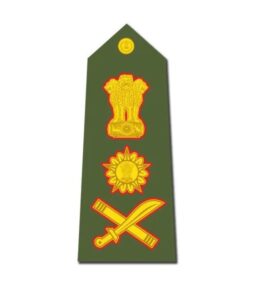
A General is the highest attainable rank in the Indian Army, representing the pinnacle of leadership and authority within the military hierarchy. Generals are four-star officers who hold pivotal positions in strategic decision-making and command the entire army. They bear the immense responsibility of overseeing the training, readiness, and deployment of forces, ensuring the defence and security of the nation. As distinguished leaders with decades of experience, Generals play a crucial role in shaping military policy and providing guidance to the government. Their leadership and expertise are instrumental in maintaining the strength and preparedness of the Indian Army to safeguard the nation’s interests.
The highest-ranking officer in the Indian Army is the Chief of Army Staff, who is a four-star General and serves as the principal military advisor to the President of India and the Government of India. The Chief of Army Staff is also the head of the Indian Army.
For more information please visit www.indiandefenceacademy.in Or best nda coaching in dehradun

